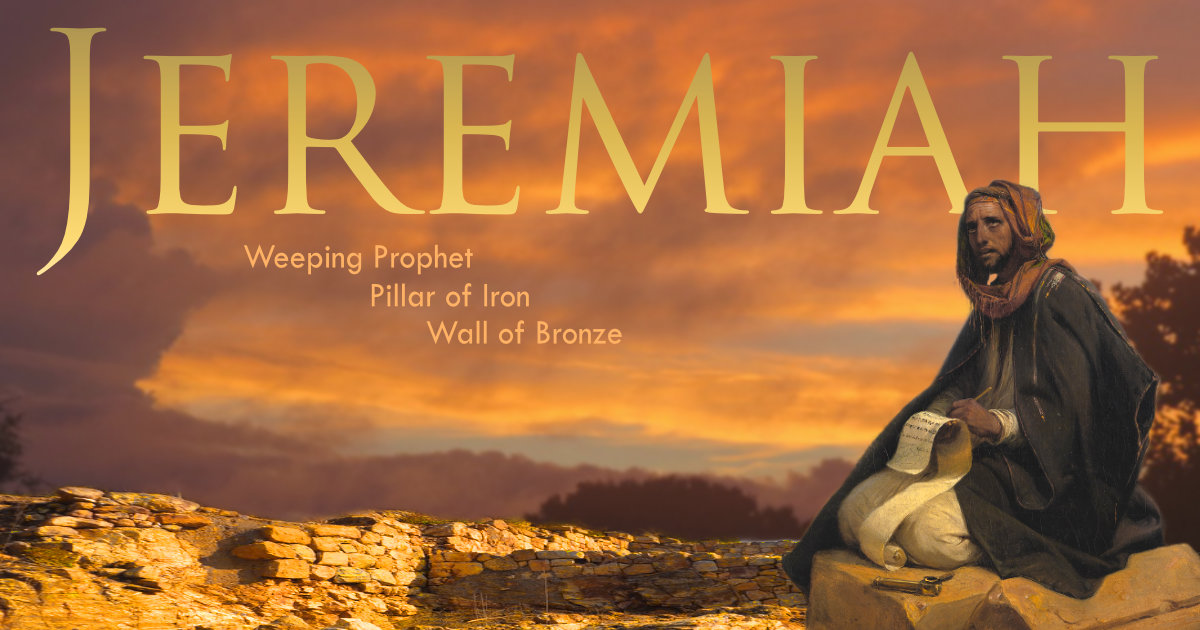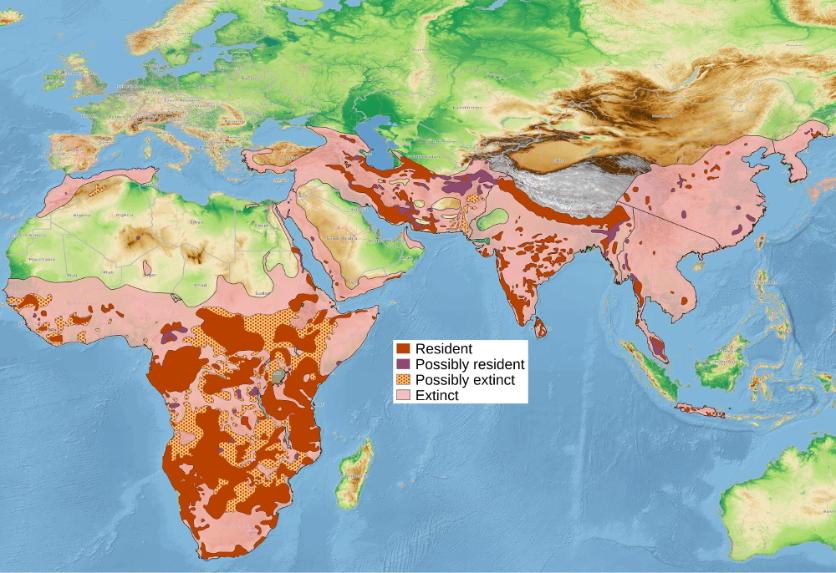יִרְמְיָהוּ
Jeremiah
The verb רוּם means, "to be high" or "to be exalted." The literal translation of the name "Jeremiah" would then be, "Yah exalts." (Refer to Jer 27:1 and Chapters 86.4.1 and 87.3.1 in Volume 5).

Introduction
The Book of Jeremiah is the second of the Latter Prophets in the Hebrew Bible, and the second of the Prophets in the Christian Old Testament. The superscription at chapter Jeremiah 1:1–3 identifies the book as "the words of Jeremiah son of Hilkiah."
Content
It is difficult to discern any structure in Jeremiah, probably because the book had such a long and complex composition history. It can be divided into roughly six sections:
Chapters 1–25
(The earliest and main core of Jeremiah's message)
Chapters 26–29
(Biographic material and interaction with other prophets)
Chapters 30–33
(God's promise of restoration including Jeremiah's "new covenant" which is interpreted differently in Judaism than it is in Christianity)
Chapters 34–45
(Mostly interaction with Zedekiah and the fall of Jerusalem)Chapters 46–51 (Divine punishment to the nations surrounding Israel)
Chapter 52
(Appendix that retells 2 Kings)
Date
According to its opening verses the book records the prophetic utterances of the priest Jeremiah son of Hilkiah, "to whom the word of YHWH came in the days of king Josiah" and after. Jeremiah lived during a turbulent period, the final years of the kingdom of Judah, from the death of king Josiah (609 BCE) and the loss of independence that followed, through the destruction of Jerusalem by the Babylonians and the exile of much its population (587/586).
The rest of this comprehensive Wikipedia article on the book can be read here.
An extract from BHFA Volume 5
Jeremiah 13:23a
הֲיַהֲפֹךְ כּוּשִׁי עוֹרוֹ, וְנָמֵר חֲבַרְבֻּרֹתָיו
his marks or a leopard his skin a Cushite can he alter?
KJB Can the Ethiopian change his skin, or the leopard his spots?
NASB Can the Ethiopian change his skin, Or the leopard his spots?
ESV Can the Ethiopian change his skin, or the leopard his spots?
NIV Can an Ethiopian change his skin or a leopard its spots?
NLT Can an Ethiopian change the color of his skin?
נָמֵר
The meaning of the stem נמר is not clear.It could be from the Assyrian namaru meaning, "shine, gleam." The Latin pardus (which is the species name of the leopard) means, "clear, bright," probably referring to the leopard's glossy coat.
This term is used 6 times in the Hebrew Bible.Is 11:6; Jer 5:16, 13:23; Songs 4:8, Hos 13:7; Hab 1:8.
חֲבַרְבֻּרֹתָיו
Noun, f. pl. + suffix 3mp. meaning, "his stripes" or "his marks."Because we are dealing with a leopard here, modern English translationstook the liberty of calling it "spots."
Biblical Hebrew does not need to have terms to name specific species of animals, birds, plants and trees. Generic terms, like "leopard" in this case, are sufficiently specific to convey the messages that they wanted to convey to their readership.
Today we are fortunate to have the results of the work done by scientists over at least two thousand years. This animal being a good case in point.
The map below shows that leopards (Panthera pardus) could formerly be found in a vast area covering most of Africa and East Asia, including the Middle East.Now extinct in large parts of Africa, the Middle East, and South-east Asia, they are found mostly in sub-Saharan Africa, and in small scattered areas elsewhere, most noticeably Iraq, Pakistan, India, and the Himalayan mountain ranges.

We now also know that there are at least 8 subspecies, with the African and Indian subspecies the most prolific in numbers today.
Of particular interest to us would be the Arabian subspecies Panthera pardus nimr shown below. It is native to the Arabian Peninsula, but considered locally extinct in the Sinai Peninsula. It is the smallest leopard subspecies
